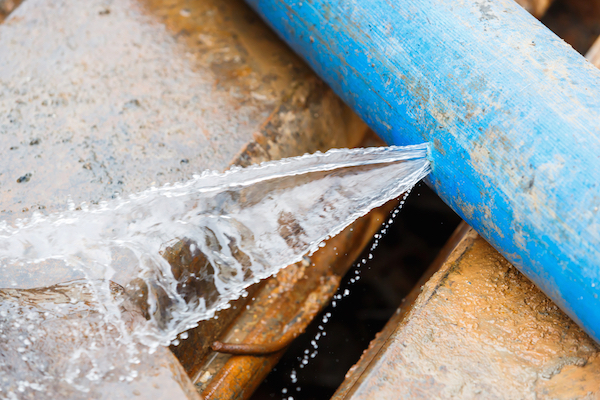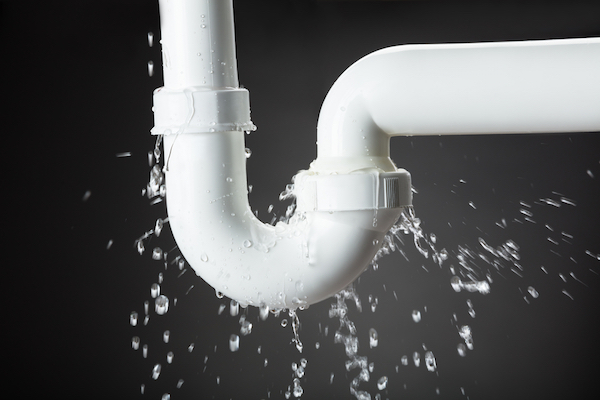
When a pipe bursts or an appliance starts to leak, you can’t always afford to wait for a plumber. Water damage will take its toll quickly. Knowing a few basic but important plumbing quick fixes can make a big difference in how you recover from a plumbing disaster.
Here are some easy repairs you can perform to minimize damage before your local smell good plumber arrives on the scene. These simple stop-gap solutions may not sound like much, but they could save you money and spare your home from greater catastrophe.

Leaking Pipe
No matter how small a pipe leak is, you don’t want water pouring out into your home. Even small drips can develop into big problems. Luckily, there are plenty of home plumbing tools designed to help you make quick fixes to prevent disaster.
Whatever method you go with, start by turning off the water. and measuring your leaking pipe’s circumference.
How to turn off the water
To turn off the water to a leaking pipe locate the nearest shut off valve. Sinks and toilets will have a small knob underneath where the water supply connects. Showers and tubs often have an access panel on the opposite side of the wall. Simply turn the shut off valve counterclockwise to stop water from flowing.
If your leak is not located near a local shut off valve, you may need to turn off the water to your entire home until the leak is addressed. Locate your water main where the city water supply enters your home. It will have a knob or lever type valve where you can shut off the water supply into your home.
The right repair supplies
Your nearest hardware store should have what you need to temporarily stop leaking pipes until they can be replaced. If you have iron pipes, purchase an epoxy compound. If you have copper, PVC or other, purchase a pipe clamp or wrap.
To repair a leaking iron pipe: Apply epoxy directly onto the leaking pipe, like you would with caulk or plumber’s putty. The epoxy will temporarily form a seal over the leak.
To repair leaking PVC or copper pipes: Affix the pipe clamp or wrap around the leak. The pressure should hold in the water until you can get the pipe replaced.
Remember that none of these three products offer a permanent solution. While they function admirably as quick fixes, the only foolproof way to be rid of a plumbing leak permanently is to replace the pipe.

Leaking Pipe Joint
Leaking pipe joints are a little trickier than normal pipe leaks. The angle of the joint can make quick repairs awkward or ineffective. Luckily, there are a few tools designed specifically for administering quick fixes to vexing leaks like these.
Repair sleeves and rubber pipe connectors are flexible enough to wrap around a leaking joint and will press in on it to squeeze water back through the pipe.
To use a rubber pipe connector or repair sleeve: Measurement is important here. Cut rubber pipe connectors so they fit tightly around the leak. The rubber of the connector resists water if it’s wrapped tightly enough, but it won’t last forever. Repair sleeves work well on smaller joint leaks. Add a clamp over your rubber wrap to hold it in place.
Over time, however, the leak may grow wider than the sleeve. In a real pinch, you could supplement either of these tools with duct tape, but keep in mind how temporary a solution it would be.

Cracked Porcelain
Toilets, bathtubs, sinks, and showers can crack or break just like anything else. Unlike everything else, however, these appliances are sometimes full of water. It’s easy to panic if the bottom of your toilet cracks open and starts flooding your bathroom. In cases like these, you’ll want to prevent the leak from damaging the floor as quickly as possible.
This is where our old pal plumber’s putty comes in. First, apply plumber’s putty to the inside of the leak. Try to squeeze it in as snugly as possible. Plumber’s putty naturally resists water, so it should hold for long enough. After you’ve squeezed the putty in as much as you can, apply caulk right over the top of it. The caulk will help form a secondary seal and lasts longer than plumber’s putty will, but it would be hard to put on without the putty. Neither the caulk nor the putty will last forever, however, so consider having your toilet, sink, or tub replaced soon after.

Faulty Water Heater
If your water heater isn’t working well, it’s likely that sediment has collected in the tank. When a layer of sediment builds up at the base of a water heater tank, it blocks the heating element. The water heater wastes time and power trying to heat through the sediment. You don’t get hot water as quickly, and your water heater becomes strained. All water heaters need to be replaced eventually but flushing your tank can extend its lifespan significantly.
To flush your water heater
First, turn off the water heater. Run hot water in a sink for about 10 minutes to drain the tank of hot water. Shut off the cold-water supply on top of the tank, and then attach a garden hose to the drain valve. Make sure the hose leads to the nearby floor drain. Re-open the cold-water supply WITHOUT closing the drain valve or disconnecting the hose. Watch the water drain until you can’t see sediment discoloration in it.
For Plumbing Emergencies in L.A.
Try these quick fixes for any of the above plumbing emergencies and then call us right away. We can fix your emergency quickly, effectively, and permanently. Mike Diamond has been on the Los Angeles scene stopping all manner of home plumbing problems since 1976.


